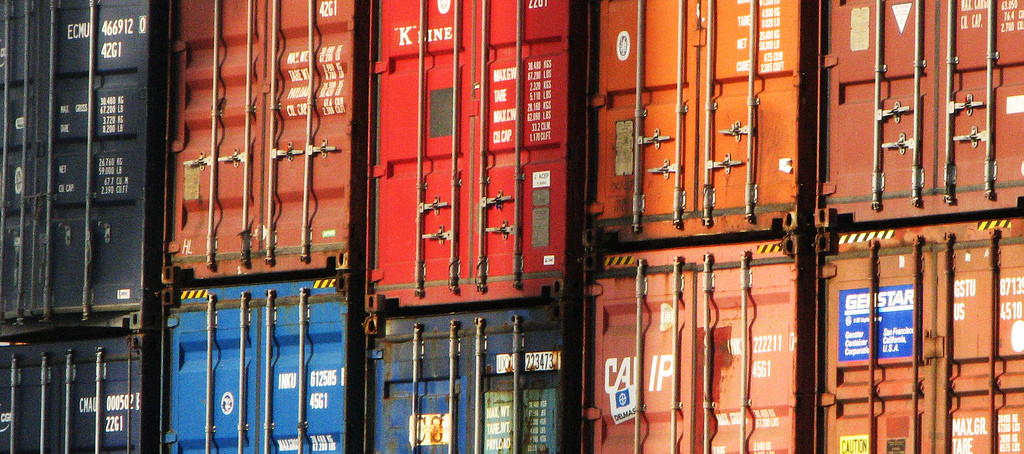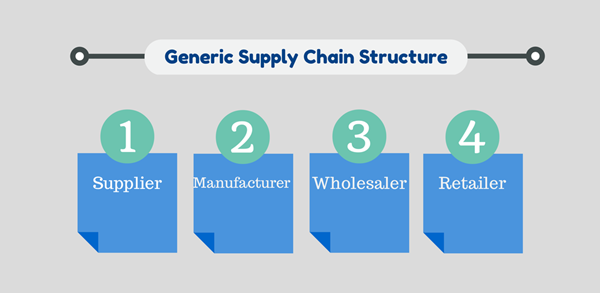Oftentimes, it seems like selling online is centered exclusively on the retail side of things. B2C images pop up of a merchant taking orders, wrapping them up, shipping them off, and interacting customers on their channels. But there’s a lesser-known side to selling online (and offline, for that matter), and that’s the B2B side – wholesaling. Rather than dealing with all the hassle of consumers, just have someone else deal with that noise.
All About That Supply Chain
Along the same lines as dropshipping, wholesaling is essentially outsourcing a chunk of your business, particularly the marketing side of things. It involves selling your products to retailers who then sell to consumers. Your customer is a business, and those retailers act as a middleman between you and a customer, picking up some of the marketing responsibilities as a result.
And just like the retailer is a middleman between wholesaler (or supplier) and customer, a wholesaler acts as a middleman between supplier and retailer. Here’s a neatly generic supply-chain chart to get a visual of how it all fits together:
(image via Supply Chain OPZ)
Keep in mind that the supply chain isn’t this rigid. Sometimes supplier and manufacturer are the same, sometimes retailers are able to skip wholesalers and work directly with suppliers, and sometimes they can even act as wholesalers.
For instance, in some merchants’ situations, they act as the manufacturer – it just depends on the product. If you’re creating some handmade goods for sale, you’re in charge of manufacturing, buying the components to your product as you create it. You can choose to sell directly to customers as a retailer, sell in bulk as a wholesaler, or do both. It’s up to you, and your supply chain is flexible so long as each piece agrees to work with you.
Bigger Is Better
But for many merchants, they’re selling others’ products instead of their own. And your average online retailer, especially the little guy, is going to have a hard time doing business directly with a supplier or manufacturer.
Most suppliers or manufacturers are focused on selling as high of a quantity as they can to retailers, and they tend to implement a minimum purchase quantities if retailers want to work with them. Retailers only have so much capital on hand to put towards inventory, so it’s not uncommon for them to be unable to work with such suppliers. On the flip-side, even if a retailer can afford it, buying directly from a supplier is a big retailer’s game, since they’re able to get better prices by buying larger quantities.
That’s where wholesalers enter the picture. They typically sell to a larger number of retailers, so they’re able to purchase larger quantities from suppliers. And because of that higher inventory, they’re able to pass those lower prices on to a variety of retailers that don’t necessarily have to buy in large quantities. As a result, many retailers can afford doing business with wholesalers (as opposed to suppliers), and they’re able to do it in a way that keeps them competitive with bigger retailers.
A Whole Bunch of Benefits
Phew, now that supply chain 101 is out of the way, here’s why wholesaling may benefit you as an online merchant.
- Volume above all – Wholesalers are all about the product and selling a lot of it. Once a good relationship is established with retailers, revenue will grow much faster, and it’ll be more consistent, to boot. Plus, as they sell the product, they’ll return to you for a restock. If you’re simply retailing, getting a customer to keep coming back for more is more of a challenge.
- Let others do the marketing for you – Since retailers are now your customers, you’re opening additional market opportunities for yourself, and they’re doing the bulk of the work. Whether you’re selling clothing or farming supplies to a retailer, consumers’ eyes are going to be on your product, boosting brand awareness (which may help you as a retailer, if you’re doing both).
- Control over sales – Just like the suppliers we spoke earlier, wholesalers have the power to set minimum orders when dealing with retailers, giving them better control of forecasting sales and revenue. On the flip-side, you can choose not to require minimum orders in order to entice your first sign-ups. It’s your call.
- Easier convincing – Once you’ve begun working with many retailers, it becomes far easier to persuade other retailers to hop on board and sell your products. Think of it like social proof.
Potential Holes to Fall In
But some things are too good to be true; wholesaling isn’t any different.
- Capital is crucial – You’ll need a good chunk of capital to get started. It’s relevant throughout the disadvantages you’re about to read over for a variety of reasons, and it’s importance cannot be understated.
- Quantity is king – Along the same lines, wholesaling revolves around product quantity, and a high number of product means high capital to buy. If you’re unable to buy in bulk from suppliers and manufacturers, not only are you less likely to work with them, you’ll be less effective as a wholesaler.
- Overhead is big – Retailers predict and buy inventory as they please, but wholesaling involves purchasing and storing a lot of inventory for sale at a given time. That means even more cash tied up in inventory, as well as storage costs that your average retailer wouldn’t have to deal with. And, in the event that you can’t get product off your shelves, manufacturers and suppliers most likely will not take it back.
You may be thinking to yourself, “wholesale seems pretty neat, but I’m already familiar with retailing, so there’s no reason to try it out.” Handling both a wholesale and retail operation at the same time is definitely a possibility, but it isn’t for the faint of heart, and has it’s own set of challenges. There’s definitely money to be made, though, so it’s worth a thought. Keep tabs on the blog – we’ll have a post on it soon.
Image: Lauren Manning, Flickr




